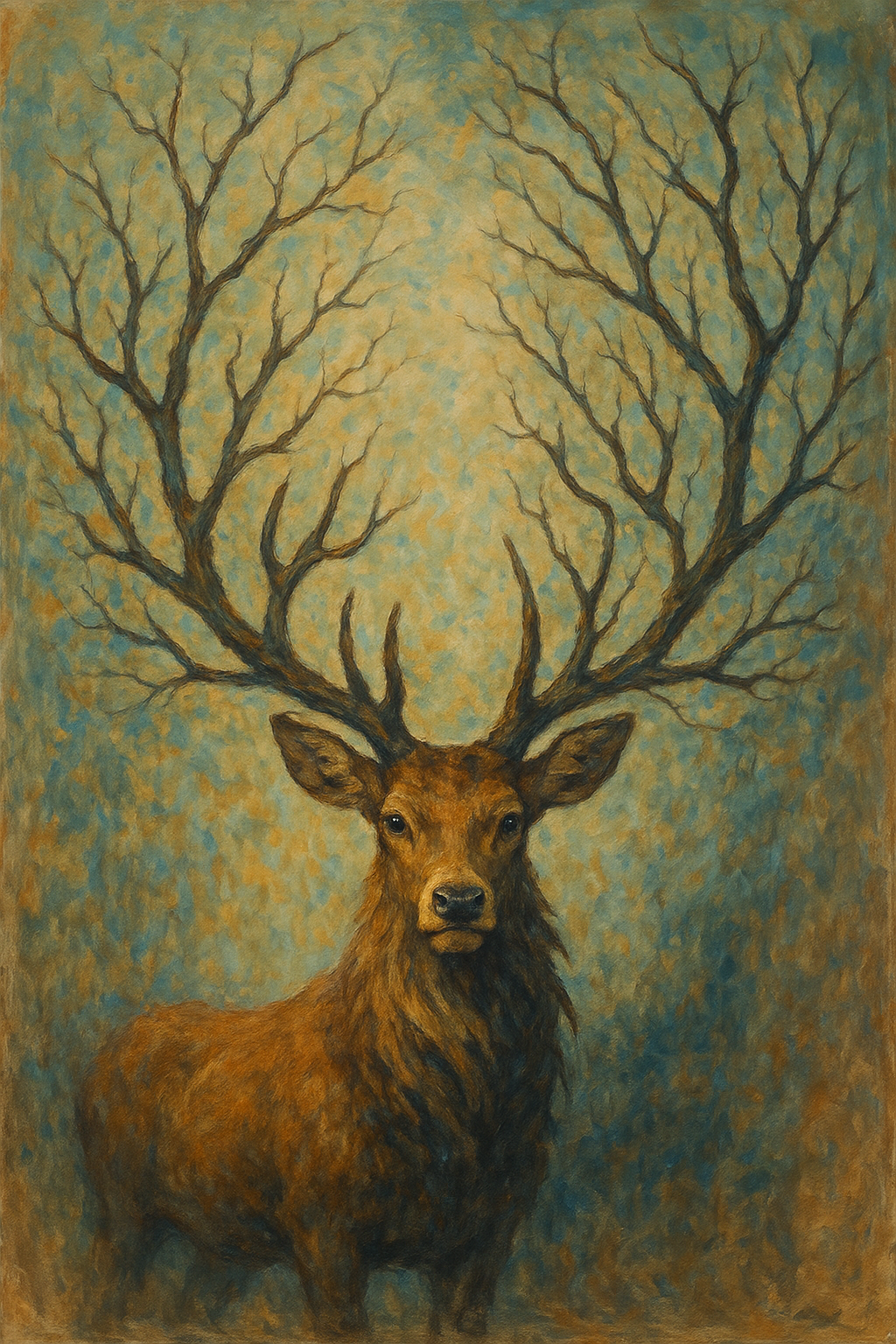
Tree branches naturally forming antler shapes with moss
The Singing Saplings: Lore of Melodies Carried on Leaves
In the quiet depths of the forest, where sunlight filters softly through layers of leaves and shadows dance upon the earth, a fascinating wonder often goes unnoticed: some trees grow branches that twist, stretch, and fork like majestic antlers. These natural sculptures evoke the primal spirit and strength of the wild, creating a subtle yet powerful bridge between flora and fauna – a silent conversation of form and meaning.
The sight of tree branches resembling antlers is much more than a curious coincidence; it is rich with symbolism and steeped in ancient stories. Across many cultures, antlers are revered symbols of strength, renewal, and deep connection to nature’s untamed heart. When tree limbs mimic these powerful forms, the trees themselves seem to embody the wild’s essence, becoming living emblems of resilience and cyclical growth.
In northern cultures, the stag’s antlers are crowned as the forest king’s symbol – an emblem of rebirth since deer shed and regrow their antlers each year. Trees with branches shaped like antlers tap into this symbolism, reminding us of the sacred rhythms of nature: growth, shedding, and renewal.
Scientifically, this resemblance arises from how certain trees grow, influenced by their species, environment, and sometimes injury or disease. Yet, for the human eye and imagination, these antler-like branches carry stories beyond biology. Many believe such trees are touched by the spirits of the wild – guardians watching over forest creatures and maintaining balance.
In Scandinavian folklore, the stag is a mystical messenger, guiding souls between worlds. Trees that resemble antlers are often said to be homes for these guiding spirits, sacred spots where hunters would pay respects and seek blessings before their journeys.
Native American traditions also hold the deer and elk as sacred beings. Their branching antlers symbolize the tree of life, connecting earth to sky, spirit to body. Trees with antler-like limbs were believed to be portals where shamans could enter trance states or commune with animal spirits.
Celtic myths speak of “stag trees” – ancient trees with sprawling, antler-like branches. These trees marked enchanted places where the wild and human realms intersected. Tales tell of forest guardians: majestic stags who could transform into men to protect sacred groves from harm.
Artists and poets have long been inspired by these arboreal antlers. Paintings often capture the stark silhouette of bare winter trees, their branches like regal racks against a pale sky – symbols of both strength and vulnerability. Poets call them nature’s crown jewels, ornaments of survival, endurance, and beauty.
This visual echo of antlers and branches also reflects a deeper ecological truth. Forests and wildlife exist in an intricate dance of coexistence: trees provide shelter and nourishment, while animals help disperse seeds and sustain forest health. The “antler branches” remind us that the wild is not a separate realm but a living, breathing ecosystem where plant and animal lives intertwine.
In some cultures and communities, antler-shaped trees become sacred ritual sites. Offerings of feathers, carved antlers, or seeds are left at their bases, honoring the intertwined fates of trees and beasts. These trees become living monuments to nature’s cycles and communal memory.
For children and adults alike, the whimsical and wild shapes of antler-like branches inspire wonder and imagination. Walking beneath such trees invites visions of woodland kings, wind spirits, and secret pathways to other realms – a reminder that nature’s creativity knows no limits.
From a scientific perspective, tree branches follow fractal geometry and growth laws optimized for capturing light. Occasionally, these natural patterns form shapes startlingly similar to antlers – symmetrical, complex, and majestic. While science explains the mechanics, human culture breathes life into the shapes with meaning and reverence.
Branches like antlers invite us to look deeper – not just at the tree, but at the wild spirit it channels. They remind us of nature’s power, mystery, and the timeless dance between earth and sky, animal and plant.
So next time you stand beneath a tree whose limbs stretch and twist like a stag’s antlers, pause and marvel. Imagine ancient forest spirits watching, wild energy humming through those wooden arms. The forest speaks in many tongues, and these antler trees are among its most silent storytellers.
Did You Know?
![]()
- Antler-like tree branches can result from storm damage or pruning.
Trees sometimes grow forked or sprawling branches after being damaged by wind, ice, or animals. These adaptive growths may resemble antlers – and often spark myths about magical or sacred trees.
![]()
Antlers and branches both grow following fractal geometry.
The branching patterns in both tree limbs and antlers are governed by similar natural rules of symmetry and optimization – maximizing space, light, or strength.
![]()
In some cultures, antler trees mark spiritual gateways.
Folklore from Celtic, Scandinavian, and Native American traditions tells of “stag trees” – ancient trees whose antlered limbs served as portals or sacred places for ritual and guidance.
FAQs About Talking Trees
Why do some tree branches look like antlers?
Tree growth patterns, species genetics, and environmental influences sometimes cause branching shapes that closely resemble antlers.
Are antler-like trees considered sacred?
Many cultures revere trees with antler-shaped branches as symbols of wildness, strength, and spiritual connection to nature.
Can I find antler-like trees in any forest?
These formations are more common in certain species and climates but can occasionally appear anywhere, inviting awe and respect.
Have questions about the trees in your own yard?
Tip Top Arborists is here to help you care for your living legends. Let our certified arborists provide expert guidance for a lifetime of healthy trees.
